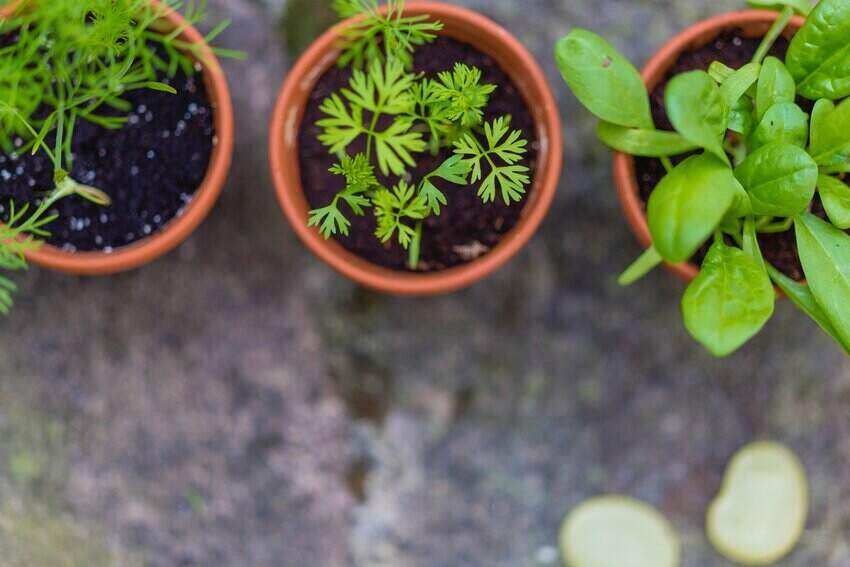Parsnips are one of the most popular and easiest to harvest root vegetables for all gardeners when they have straight roots. But parsnips often develop twisted, forked, or stunted roots.
Although you germinate parsnips indoors or in the soil directly, it can be a little tricky to snag these problems. However, years ago few English Gardeners discovered an easy and money-saving solution for this problem while growing parsnips for competition.
The solution is growing parsnips in toilet rolls at the early start of a season. Though this idea may seem a little odd to a few people, American gardeners have also given their approval to this solution while using it for transplanting taproot products.
So, let’s know how actually a toilet roll can help in growing parsnips straight and healthy. We’ll also cover the process of planting parsnips in pots or containers. Keep reading!
Tips on Growing Parsnips in Toilet Rolls and Containers

How to Grow Parsnips in The Toilet Paper Rolls?
Growing the parsnips in toilet paper rolls is more like a DIY thing, but this whole process also needs a little preparation for best harvesting. If you don’t have the toilet rolls, you can make your own tubes with newspaper.
Let’s check out the planting process of parsnips in toilet paper rolls.
1. Setting Up for Seeding
So, to do the first adventure of growing parsnips on loo paper rolls, first find a small rectangular or square container with clear visibility, such as a plastic salad bowl. Now write the name of the vegetable you want to grow in that container.
Place all the tubes in a container allowing little gaps between them for ensuring air circulation. If you want you can also fold the tubes in a square shape, which is less likely to fall about but it doesn’t assure the symmetrical growth as the circular tube.
Now as your tubes are ready to plant seeds (like the store-bought squash), fill the tubes with seed starting mix or good quality potting soil, halfway through. While filling up the tube remember to temp down to prevent any kind of air pockets. After filling the whole tube temp down for the last time.
And if any soil falls down around the tubes, don’t worry at all as it will help to protect them from drying out. Now moist the soil until the tubes fully dampen from outside and then start with planting.
For fast germination, you can prime the parsnip seeds into a damp paper towel for some days. If you don’t have so much time, at least an overnight and day soak of the seeds is recommended before planting.
Plant only three seeds per tube and place one close to the middle. It may take 3 weeks to germinate the parsnip seeds.
2. Getting the Moisture Right
Once the leaves start growing like the cut roses, you need to check them on a daily basis to make sure they are neither too dry nor too wet. The best way to keep control of that is to water the tube from the top with dribbling water and notice the cardboard color to track the moisture spread through the tube.
If there are visible molds outside the tubes, they are too wet. But if the potting mix is too dry, rehydrate them with a spray bottle.
3. Transfer into Soil or Cardboard Tubes
As parsnips send taproots very fast, they should be transferred to the soil or cardboard tubes as soon as they grow solid color leaves. Parsnips grown in cardboard tubes can reach up to 17 inches or more. That means you have to deeply prepare the soils before planting.
Dig a few deep holes about 17 to 20 inches, and transfer the plants into those holes. Lift each plant using a spatula, and place them into a well-prepared bed. Also, don’t remove the tubes from the seeds, place them on the top of planted seedlings. It will protect all the seeds from cutworms and slugs.
Plus, these hard cardboard tubes will help to prevent weeding and minimize the disturbance caused for weeds. Also, you will get some solid color parsnips after the harvest is done.
How to Grow Parsnips in Pots or Containers?
If you don’t want to plant your parsnips into toilet rolls, there is an alternative for you. You can go for large pots or containers at least 24 inches or 60 cm in height for healthy parsnips harvest.
First, fill the pot or container with sharp sand and then cover it with quality compost. For preparing the soil too fast you can also cover the container or pot with plastic or glass to warm up.
Also, you have to ensure the container or pot has free draining for preventing rotten roots. But don’t forget to water the plants every week and even more time when dry spells.
Another thing to keep in mind is parsnips sweeten when exposed to frost which is much easier in containers or pots. But if the parsnips get too frozen, they can rot. So the best way to protect them from extra freezing is to apply some mulch over the soil (same as strawberry) as well as if needed insulate the container or pot.
This method will make it possible of growing parsnips in raised beds too. If your pot is too large for the parsnips only, you can also grow other plants in the same pot.

FAQs on Growing Parsnips in Toilet Rolls, and Other Containers
Can I grow other plants using toilet paper rolls?
Yes, you can do it. Toilet paper roll is just not for growing parsnips or taproot veggies. They are also very useful for growing sweet corn, snap beans, and many other plants with deep roots like the sweet peas that often look for disturbing roots.
In the summer, when leeks grow in good size, you can split the toilet roll in between and pop it around the leek’s neck to accumulate the soil. If you still don’t find any uses for toilet paper you can use it as compost for your garden when in a wet stage.
Is there any problem with planting parsnips using toilet rolls?
Though this toilet tube idea is approved by the British and American gardeners, it still has some defects. Toilet rolls never fully prevent the forked roots as the toilet tubes are too short and roots can reach the bottom very quickly and get forked when touching the bottom of a seeds tray or poorly prepared soil.
For this underlying problem, the solution is to place the tubes filled with compost. Thus, the parsnip seeds have a low germination rate, you can pre-germinate the seeds into a wet toilet tube. Then place the germinated seeds (like the frozen pepper seeds) below the compost surface.
What are different types of parsnips?
Parsnip is available in a versatile types. Several popular parsnips are All American, The Student, Hollow Crown, Cobham Marrow, Harris Model, and many more.
Which is the ideal soil to plant parsnip?
Parsnips grow well in slightly acidic soil having a pH of 6 to 6.8.
Which is the ideal time to sow parsnips?
April to June is the best time to sow parsnip at an approximate temperature of 12 oC or 52 oF.
Wrap Up
To wrap the whole thing up, the harvesting process of parsnips has some tricky problems like twisted, forked, or stunted roots. But the solution, you know already. It’s lying straight in your toilets, wrapped with some paper towels.
It is going to be an easy and cost-effective way to harvest the best troops of parsnips or any other taproot veggies in your garden. And if you still don’t like the idea of growing delicious veggies in toilet paper, then pots or containers are there for your solution.
A video on growing parsnips in a pot and how those parsnips look.

I’m Shofi, a passionate gardener and blogger. I have 10+ years of experience in gardening and hold certifications in horticulture and garden design. I share my knowledge and skills through my garden blog to inspire and educate others on the joys of gardening. I try to provide valuable information and create a community for gardeners of all levels to connect and learn. My ultimate goal is to inspire others to start their own gardens and connect with nature.

1 thought on “Growing Parsnips in Toilet Rolls, Pots, or Containers: 3 Techniques!”